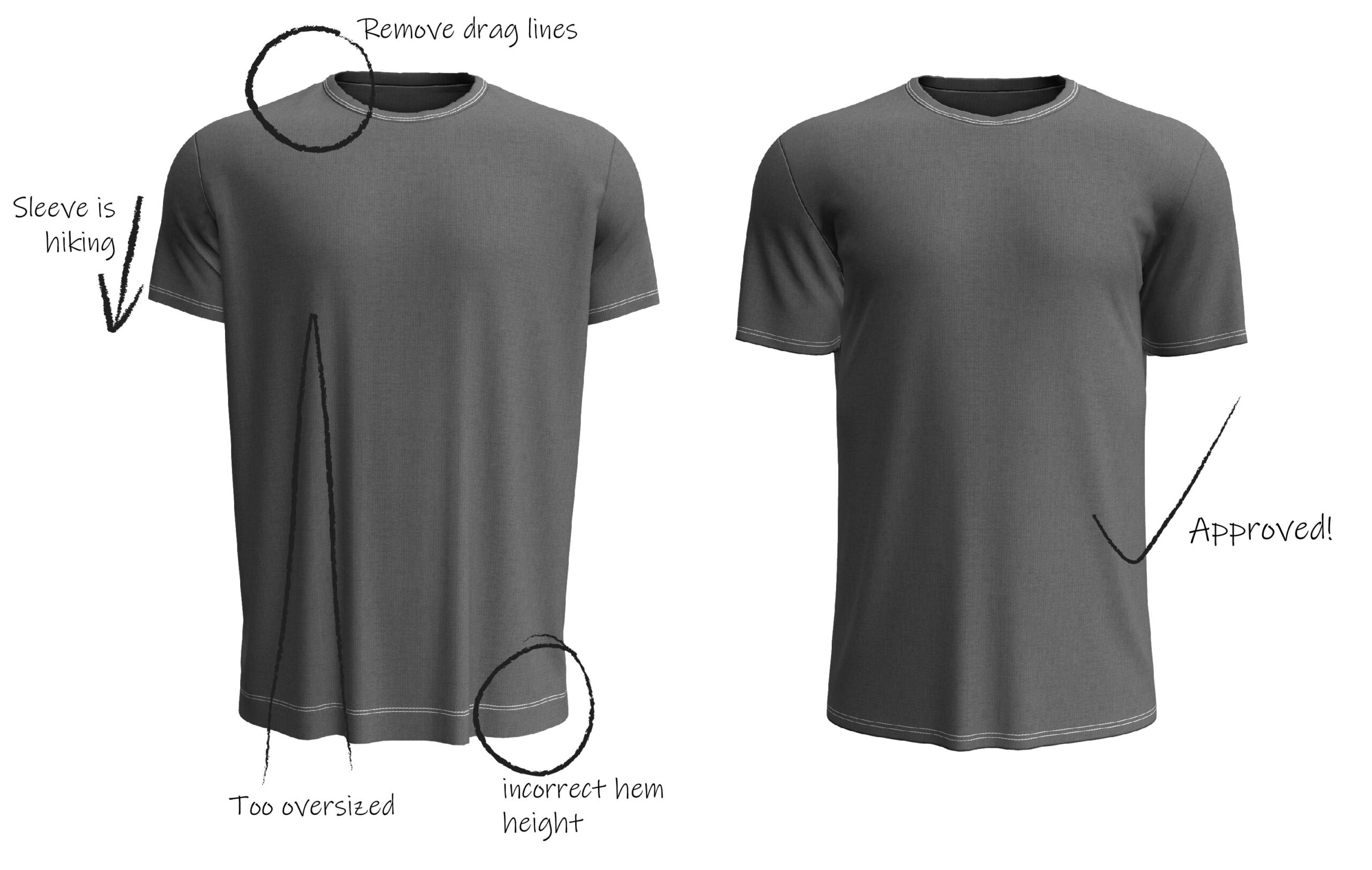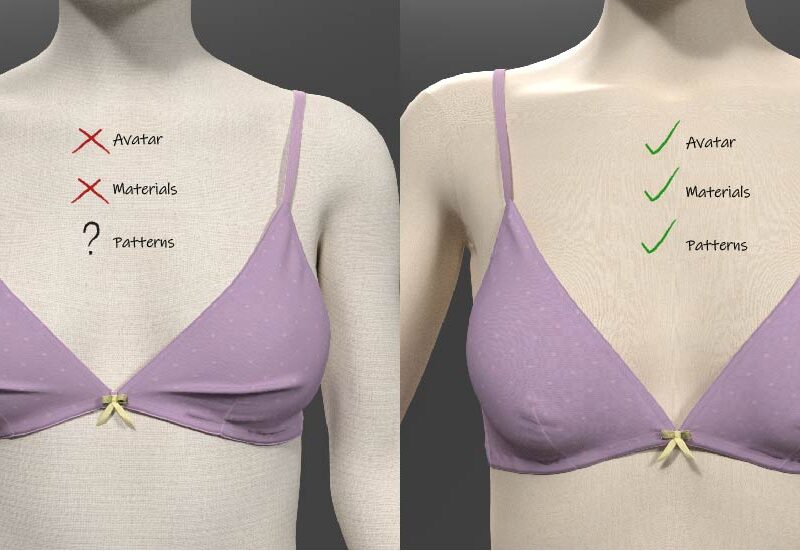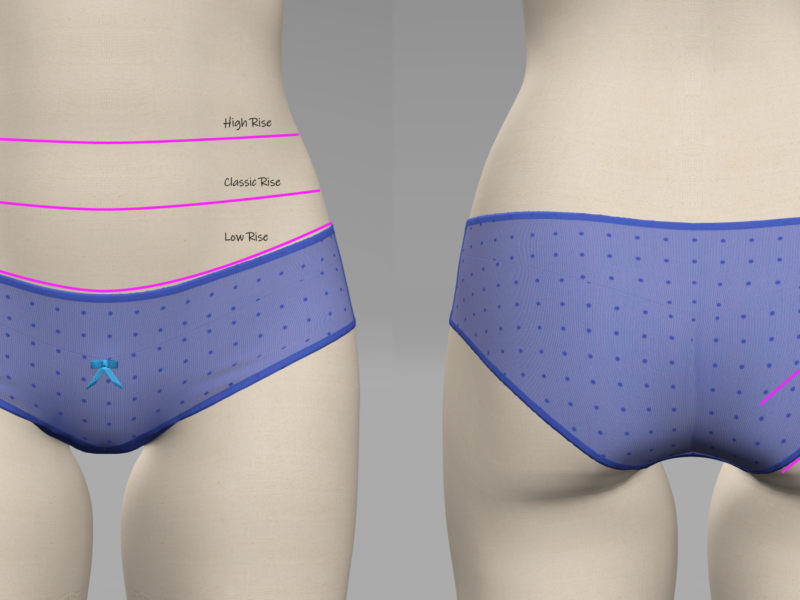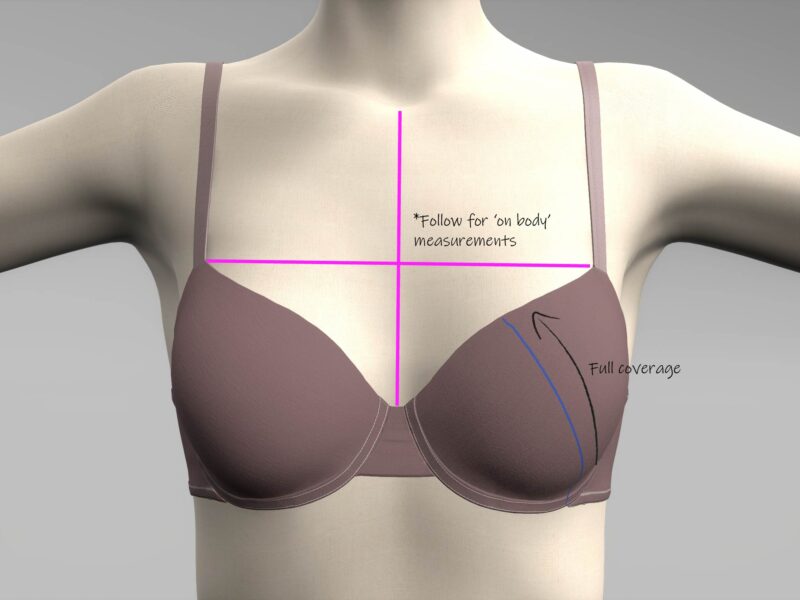3D software for fashion design can help save time during design concepting and ideation phase of development. Digital fashion can help get the first physical proto closer to the design intent.
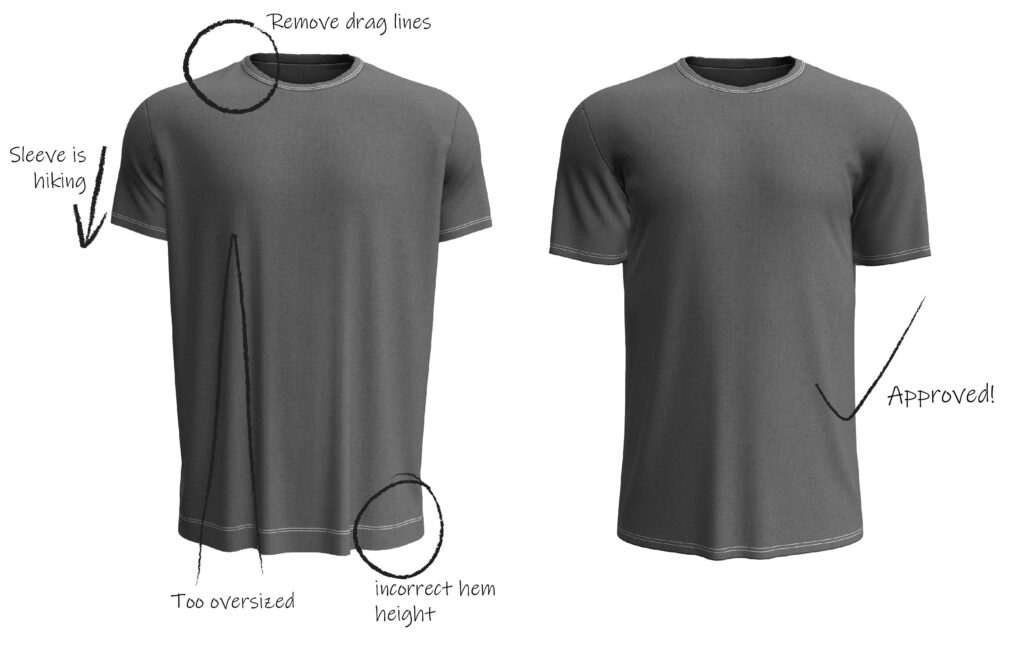
During a recent conversation about introducing new styles under a time crunch, I threw in a casual comment about our vendor’s 3D capabilities. To my surprise, I was met with, “How can 3D help with this?”
Let me explain 5 time saving reasons digital fashion can help with concept protos.
How Digital Fashion Can Help with Concept Protos
In the early stages of concept development, the goal is to piece together the entire puzzle. Which materials should we use? What is the intended fit? Does the vendor have an initial pattern? Fortunately, 3D technology can bridge these initial ideas, bringing your first physical prototype much closer to your vision and design intent.
1. Materials
Often times several variations of concepts with different materials are needed to help visualize which is best for a brand. This requires so much labor, material and transportation resources and ultimately is very wasteful. 3D fashion technology allows designers to quickly swap out different digitized materials and see a very realistic visual representation. Imagine the time savings if you no longer have long material lead times!
2. Patterns
This is a big reason why using 3D software during the initial phases of concept development will be so beneficial for a fashion brand. Digitized patterns typically in .dxf file format are used in 3D software for garment creation. Any changes made to the concept garment will directly affect the pattern, and this is the same pattern that can be used to make your physical proto. If your block or sloper style is already created in 3D then congratulations because you will be saving even more time! It is much faster to revise an existing block style in 3D than creating a new concept garment file.
3. Construction Details
Oftentimes, construction details on a flat Illustrator sketch are either missed or not accurate. This can result in a concept proto that you have waited weeks for to be incorrect. It is a challenge to imagine how a new idea should be constructed when you are working with a 2 dimensional image. It is easier to notice a missing or inaccurate detail in digital fashion especially since you are using more accurate resources for materials and patterns. The time savings will be seen as one can make design construction detail decisions in the 3D software as you get immediate feedback being in the tool, and thus the first physical proto will be much more accurate.
4. Fit Intention
There are a lot of pieces of information necessary to communicate what the fit intention should be. A flat design sketch, which can raise questions like “should this be slim fit or should this be more relaxed?” or “is this a high rise or mid rise?” To help fill in these gaps there is the garment specification or measurement sheet. However this can raise questions around shape and contour. 3D software is a wonderful tool that not just shows visual for fit and proportion but also houses information for pattern, garment and ‘on body’ 3D avatar measurements. The decision making around fit intention during the concept phase of development will save time once style goes to fit development as decisions were made up front.
5. Communication
With 3D fashion technology, all the building blocks to create a garment live in a single file. This makes for a very streamlined compact tech pack with much more accurate visuals. This 3D garment file can easily be passed through departments, teams and vendors and allow for open communication and collaboration. Simple, clear and effective communication is always a time saver.
The evidence is clear, using 3D fashion technology at the beginning concept phase of development will allow teams to make confident decisions faster.
What challenges are you facing? How can 3D help you save time? Let me know in the comments!

